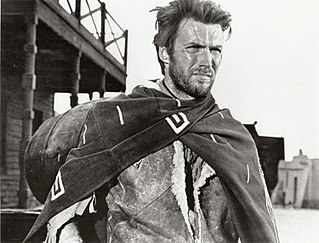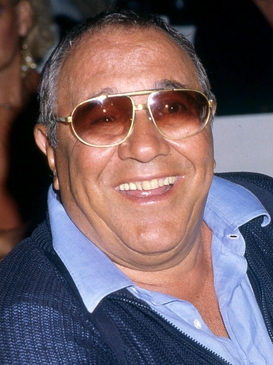
The Spaghetti Western is a broad subgenre of Western films produced in Europe. It emerged in the mid-1960s in the wake of Sergio Leone's film-making style and international box-office success. The term was used by foreign critics because most of these Westerns were produced and directed by Italians.

Sergio Corbucci was an Italian film director, screenwriter and producer. He directed both very violent Spaghetti Westerns and bloodless Bud Spencer and Terence Hill action comedies.

Ringo and His Golden Pistol is a 1966 Italian Spaghetti Western film directed by Sergio Corbucci and starring Mark Damon.

George Hilton was a Uruguayan actor well known for his many Spaghetti Western performances. Sometimes credited as Jorge Hilton, he appeared in over 20 Euro-Westerns as well as several giallo and action films.

Giuliano Gemma was an Italian actor. He is best known internationally for his work in Spaghetti Westerns, particularly for his performances as the title character in Duccio Tessari's A Pistol for Ringo (1965), Captain Montgomery Brown/'Ringo' in Tessari's The Return of Ringo (1965), the title character in Michele Lupo's Arizona Colt (1966), Scott Mary in Tonino Valerii's Day of Anger (1967) and Michael "California" Random in Lupo's California (1977).

The Savage Guns is a 1961 Eurowestern film, an international co-production by British and Spanish producers. Based on a specially commissioned screenplay, The San Siado Killings, written by Peter R. Newman and directed by Michael Carreras, the film is credited as the first traditional Spaghetti Western.

The Return of Ringo is a 1965 Italian Spaghetti Western film directed by Duccio Tessari from a screenplay he had co-written with Fernando Di Leo, inspired by Homer's Odyssey. It stars Giuliano Gemma in the titular role, which, in spite of sharing the same name with that of A Pistol for Ringo along with most of the actors and the crew, is not a sequel to that film and deals with an entirely new character and a storyline. It also stars Fernando Sancho, Nieves Navarro, George Martin, Antonio Casas, and Hally Hammond.

The Cats is a 1968 crime film directed by Duccio Tessari, starring Rita Hayworth and Klaus Kinski.

Silver Saddle is a 1978 spaghetti Western. It is the third and final western directed by Lucio Fulci and one of the last spaghetti Westerns to be produced by a European studio. The film was based on an original story written by screenwriter Adriano Bolzoni and directed by Fulci for the Italian studio Rizzoli Film Productions.

Kiss Kiss... Bang Bang is a 1966 Eurospy comedy film directed by Duccio Tessari and starring Giuliano Gemma, Nieves Navarro, George Martin, and Daniele Vargas.

Sundance and the Kid is a 1969 Spaghetti Western comedy directed by Duccio Tessari and starring Giuliano Gemma, Nino Benvenuti, and Sydne Rome. The film was also released under the titles Alive or Preferably Dead and Sundance Cassidy and Butch the Kid.

Nieves Navarro García is a retired Spanish-born Italian actress and fashion model. Navarro worked extensively in Italian cinema appearing alongside actors such as Totò and Lino Banfi in the 1960s and 1970s. She later adopted the Americanized stage name Susan Scott for many of her productions after 1969.

Duccio Tessari was an Italian film director, screenwriter and actor, considered one of the fathers of Spaghetti Westerns.

Lorella De Luca was an Italian film, television, and voice actress. One of the most recognized ingénues of Italian cinema during the mid-to-late 1950s, she is best known for having played naive young girls in dramas and comedies.

José Manuel Martín Pérez was a Spanish film and television actor, radio broadcaster, and screenwriter. He was a popular character actor in Spanish cinema during the 1950s and 60s, best remembered for playing villainous henchmen, appearing in more than 100 film and television productions.

Django Shoots First is an Italian Spaghetti Western film directed by Alberto De Martino.

Tex and the Lord of the Deep is a 1985 Western film co-written and directed by Duccio Tessari and starring Giuliano Gemma and William Berger. The film is an adaptation of the Tex comic series that were popular in Italy. Previously attempted to be made into a production in the late 1960s and early 1970s, the film was eventually made by Tessari who adapted the film from the comics originally to be a pilot for a television series.

Savage Gringo is a 1966 Western film starring Ken Clark. The film is about a drifter who protects a rancher couple from a ruthless landowner. Under its Italian title, Savage Gringo was one of numerous Spaghetti Westerns retitled to take advantage of the success of Duccio Tessari's successful Ringo duology.


















